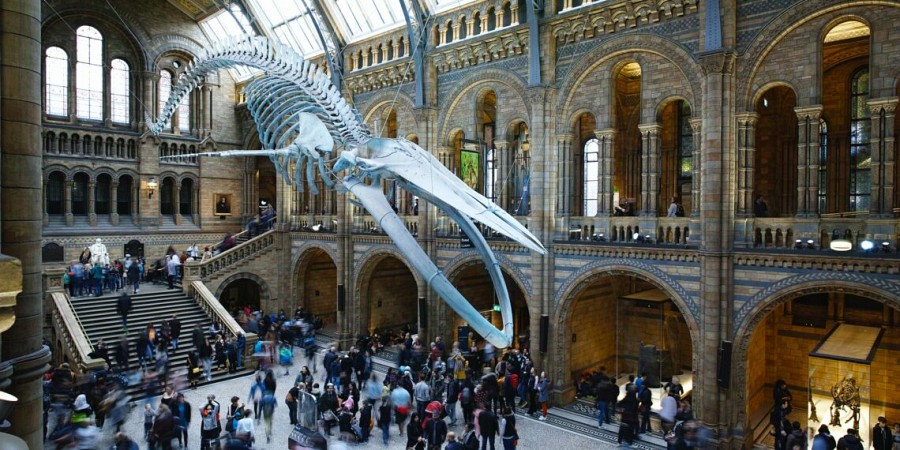The Museum of Zoology, located in the heart of Brussels, Belgium, is a fascinating destination for anyone interested in the natural world. With over 20,000 specimens on display, the museum provides visitors with an opportunity to learn about the rich diversity of animal life on our planet. In this article, we will explore the various aspects of this unique European travel experience.
What is the Museum of Zoology in Brussels?
The Museum of Zoology in Brussels, also known as the Royal Belgian Institute of Natural Sciences, is a scientific institution that focuses on the study and preservation of natural history specimens. The museum was founded in 1846 and currently houses one of the largest collections of animal specimens in the world. It aims to promote public awareness of biodiversity and conservation issues through its exhibitions and educational programs.
How to Get There and When to Visit?
The museum is located at Rue Vautier 29, 1000 Brussels, Belgium and can be easily accessed by public transport. Visitors can take the metro to the Montgomery station or the tram to the Musée des Sciences naturelles stop. The museum is open every day from 10 am to 5 pm, except on Mondays and some public holidays.
What Can You Expect to See and Do?
Upon entering the museum, visitors are greeted by a full-size replica of a blue whale, which hangs from the ceiling of the entrance hall. The galleries are then organized into several thematic sections, including mammals, birds, reptiles, and insects. One of the highlights of the museum is the Gallery of Evolution, which showcases the evolution of life on Earth through interactive displays and multimedia installations.
Another popular exhibit in the museum is the dinosaur gallery, which features a variety of fossils and skeletons from the Jurassic period. Visitors can also explore the museum's extensive collection of shells and other marine invertebrates, as well as its collection of meteorites and minerals.
In addition to the exhibitions, the museum offers a range of educational programs for visitors of all ages. These include guided tours, workshops, and hands-on activities that allow visitors to learn more about the natural world.
Pros and Cons of Visiting the Museum
Pros:
- The museum boasts one of the largest collections of animal specimens in the world, making it an excellent destination for anyone interested in natural history.
- The Gallery of Evolution and the dinosaur gallery are both fascinating exhibits that are sure to captivate visitors of all ages.
- The museum's educational programs offer a range of activities and workshops that cater to children and adults alike.
Cons:
- Some of the exhibits may be too graphic or disturbing for young children.
- The museum can be quite crowded during peak tourist seasons, which can make it difficult to fully appreciate the exhibits.
Alternatives to Visiting the Museum
While the Museum of Zoology is certainly a unique and fascinating destination, there are several alternative attractions in Brussels that may appeal to visitors with different interests. These include:
- The Atomium: A landmark building that was constructed for the 1958 World Expo and offers panoramic views of the city.
- The Royal Palace of Brussels: The official residence of the Belgian monarchy, which is open to the public during the summer months.
- The Horta Museum: A museum dedicated to the life and work of the famous Belgian Art Nouveau architect Victor Horta.
Tips for Visiting the Museum
- Plan your visit for a weekday if possible, as the museum can be very crowded on weekends.
- Wear comfortable shoes, as there is a lot of walking involved in exploring the galleries.
- Consider purchasing tickets in advance online to avoid long lines at the entrance.
Step-by-Step Guide to Visiting the Museum
- Take the metro or tram to the Montgomery station or Musée des Sciences naturelles stop, respectively.
- Purchase tickets at the entrance or online in advance.
- Begin your visit in the entrance hall, where you can see the full-size replica of a blue whale.
- Explore the galleries, taking note of the various thematic sections and exhibits.
- Participate in any educational programs or workshops that interest you.
- Take a break in the museum café or browse the gift shop before leaving.
Comparing the Museum to Similar Attractions
The Museum of Zoology in Brussels is a unique destination that offers visitors an unparalleled collection of animal specimens and a range of educational programs. While there are several other natural history museums around the world, few can match the breadth and depth of the collections on display here.
Tips on Finding the Best Accommodations Nearby
Brussels is a bustling city with a wide range of accommodation options to suit all budgets and preferences. Some of the best areas to stay near the Museum of Zoology include the European Quarter and the Ixelles district, both of which offer easy access to public transport and a range ofrestaurants and shops. Accommodation options range from luxury hotels to budget-friendly hostels, with something to suit every traveler.
FAQ
- Is the museum suitable for young children?
- While some of the exhibits may be too graphic or disturbing for young children, the museum offers a range of educational programs and activities that cater specifically to children.
- Can I take photographs inside the museum?
- Yes, visitors are allowed to take photographs inside the museum, although the use of flash is prohibited in some areas.
- How long does it take to visit the museum?
- The length of your visit will depend on your interests, but most visitors spend between two and three hours exploring the galleries.
- Are there any restaurants or cafes at the museum?
- Yes, there is a café located inside the museum that serves a range of snacks, beverages, and light meals.
- Is the museum accessible to visitors with disabilities?
- The museum is fully accessible to visitors with disabilities, with elevators and ramps provided throughout the building.
In conclusion, the Museum of Zoology in Brussels is a unique and fascinating destination that offers visitors an opportunity to learn about the natural world and explore one of the largest collections of animal specimens in the world. From the Gallery of Evolution to the dinosaur gallery and the various educational programs, there is something for everyone at this remarkable institution. If you are planning a trip to Brussels, be sure to include a visit to the Museum of Zoology on your itinerary.


